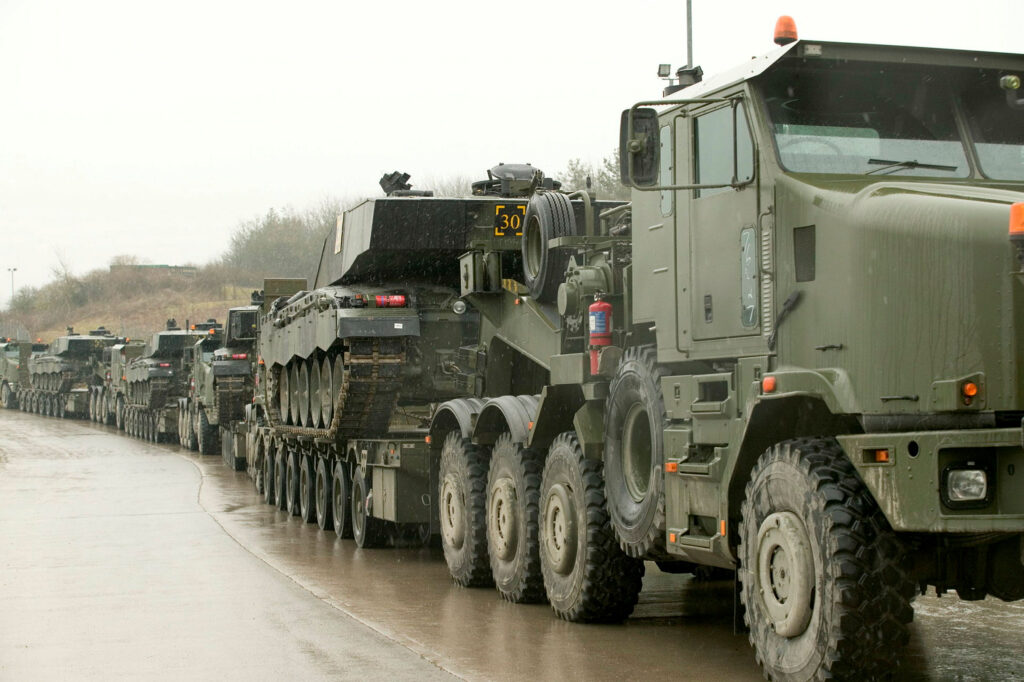
Transport vehicles form a critical component of the British Army’s logistics capability, enabling the movement of personnel, equipment, and supplies in both combat and support roles. These vehicles span a range of specialized designs, offering robust, versatile, and often modular solutions tailored to the demands of modern military operations. Below, we explore the vehicles in use, including updates and legacy systems, while highlighting their roles and capabilities.
Strategic Importance of Transport Vehicles
The ability to deploy troops and sustain operations across diverse environments depends heavily on the reliability and adaptability of the Army’s transport fleet. Vehicles are classified based on their roles, mobility, and payload capacity, ensuring that every logistical need is addressed, from tactical resupply to the transport of armored assets.
Core Vehicle Categories
a. Light and Medium Utility Vehicles
The Truck Utility Light/Medium (TUL/TUM) series, including militarized versions of the Land Rover Defender, has been a staple of the British Army’s fleet. These vehicles serve in a variety of roles:
- Reconnaissance and Fire Support: Equipped with the Weapons Mount Installation Kit (WMIK), they carry heavy and general-purpose machine guns.
- Command and Communications: Provide mobility for command elements and information systems.
Some variants, such as the Wolf Land Rover, are specialized with waterproofing, winterization, or weapons integration, making them versatile for different theaters of operation.
The Pinzgauer 716M Truck Utility Medium (Heavy Duty) is another essential vehicle, capable of towing artillery such as the 105mm Light Gun or being transported by air or helicopter for rapid redeployment.
b. Cargo and Load-Carrying Vehicles
The cargo transport category encompasses a wide array of trucks optimized for bulk transport and resupply missions:
- Leyland/DAF 4-Tonne General Service (GS): Air-portable and adaptable, capable of carrying troops, pallets, or specialist equipment.
- Bedford TM 8-Tonne and 14-Tonne Medium Mobility Trucks: Provide medium-lift capacity, often moving NATO-standard pallets, containers, or fuel.
These vehicles are configured to meet the varying demands of general service and battlefield logistics, including towing additional payloads.
c. Heavy Transport and DROPS
The Demountable Rack Offload and Pickup System (DROPS) forms the logistical backbone of the British Army. This system facilitates rapid loading and unloading of flatracks or containers, ensuring high operational efficiency. Two primary DROPS platforms are:
- Leyland Medium Mobility Load Carrier (MMLC): Operates solo or with trailers for general logistical support.
- Foden Improved Medium Mobility Load Carrier (IMMLC): Specialized as an ammunition carrier, often supporting AS90 artillery.
Key specifications for DROPS include a payload of 15 tonnes and advanced mobility, enabling support in austere environments.
The British Army has progressively replaced older systems with the MAN Support Vehicles, introduced under a £1 billion contract beginning in 2007. This program delivered over 5,000 modern trucks, with options for additional units. These vehicles span cargo, recovery, and specialized roles, replacing the tri-service fleet of 4-, 8-, and 14-tonne trucks.
d. Heavy Equipment Transporters (HETs)
Heavy Equipment Transporters are vital for moving main battle tanks and other large armored assets. The Oshkosh 1070F HET, paired with the King Trailer GTS 100, is the most powerful transporter in production. Key capabilities include:
- A payload capacity of up to 70 tonnes for Main Battle Tanks.
- Rapid movement of immobilized vehicles using onboard winches.
- A 700hp Caterpillar C18 diesel engine for unparalleled towing performance.
These transporters reduce wear on tank tracks while ensuring mobility for the heaviest assets in the fleet.
Specialized Platforms and Innovations
a. Armored Logistic Vehicles
Vehicles like the Wolfhound and protected variants of the MAN Support Vehicle offer enhanced survivability for operations in high-threat environments. Their integration of ballistic and mine protection ensures the safe delivery of critical supplies.
b. Modular Systems and Future Proofing
DROPS and similar systems represent a shift toward modular logistics, with standardized payload platforms enabling rapid reconfiguration for various missions. The British Army continues to prioritize flexible designs that can adapt to future requirements.
c. Sustainability and Emerging Technologies
Efforts are underway to incorporate hybrid and electric propulsion systems, aiming to reduce fuel dependency and thermal/acoustic signatures. Autonomous ground vehicles, such as the Rheinmetall Mission Master, are also being evaluated for logistics tasks in contested environments.
Role of the Royal Logistic Corps (RLC)
While many vehicles are shared across all arms of the British Army, the Royal Logistic Corps (RLC) is the primary operator of transport assets. RLC units ensure the timely and efficient delivery of supplies, ammunition, and equipment, often under challenging conditions.




















